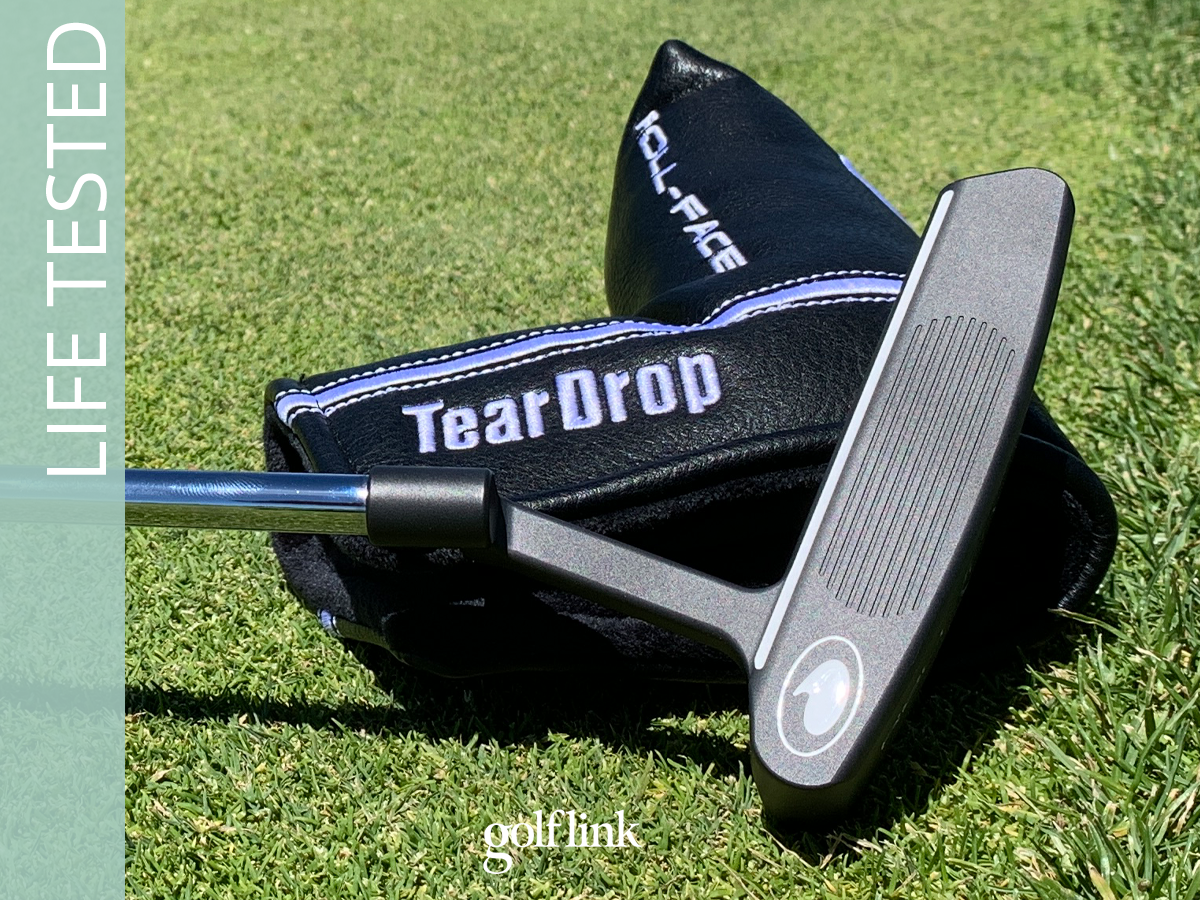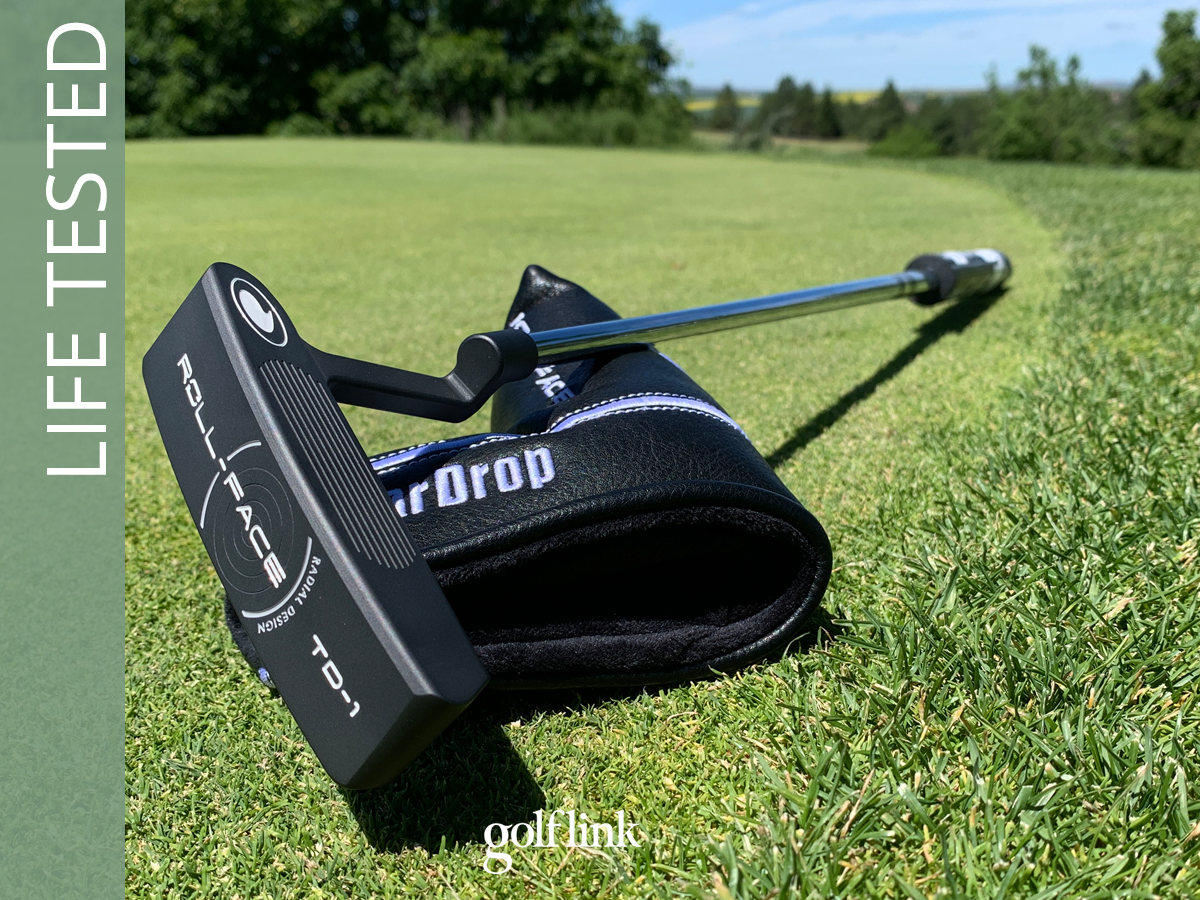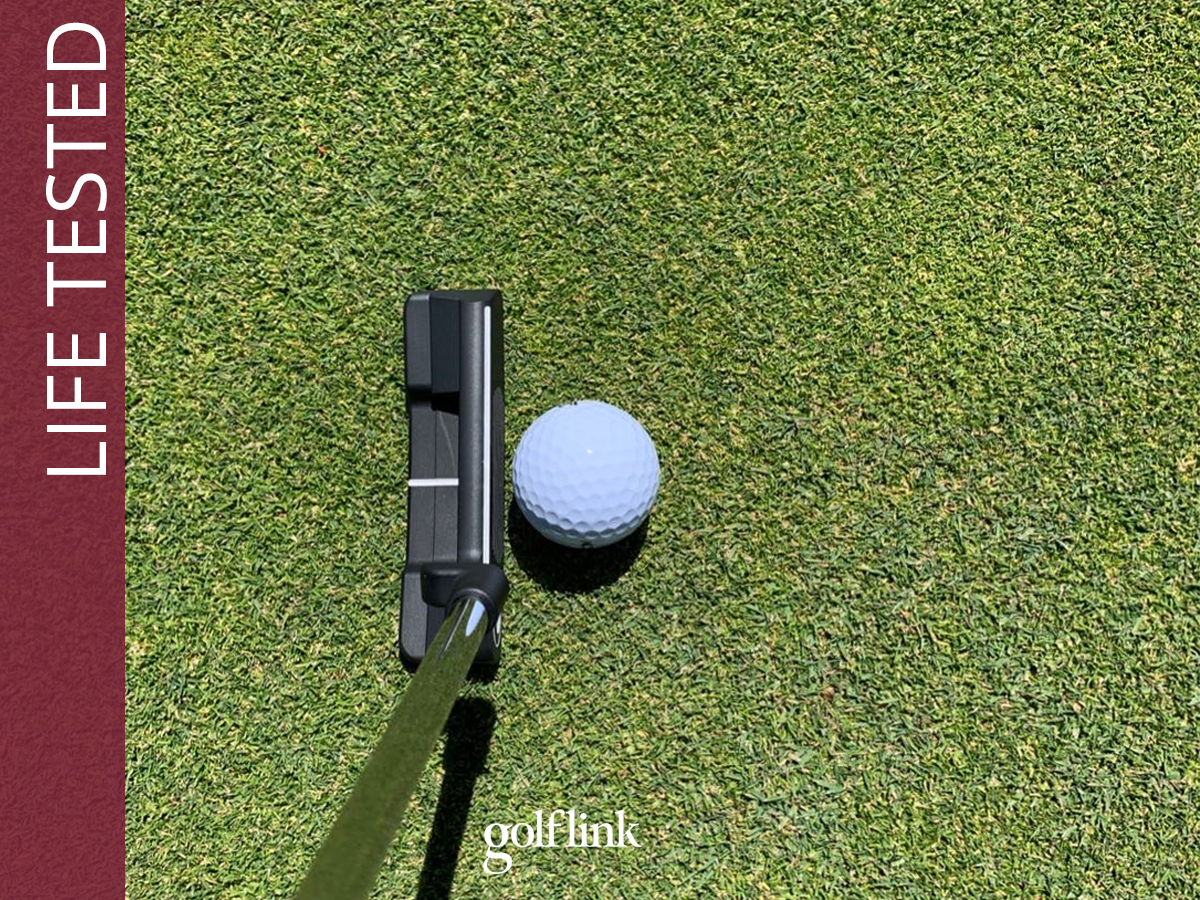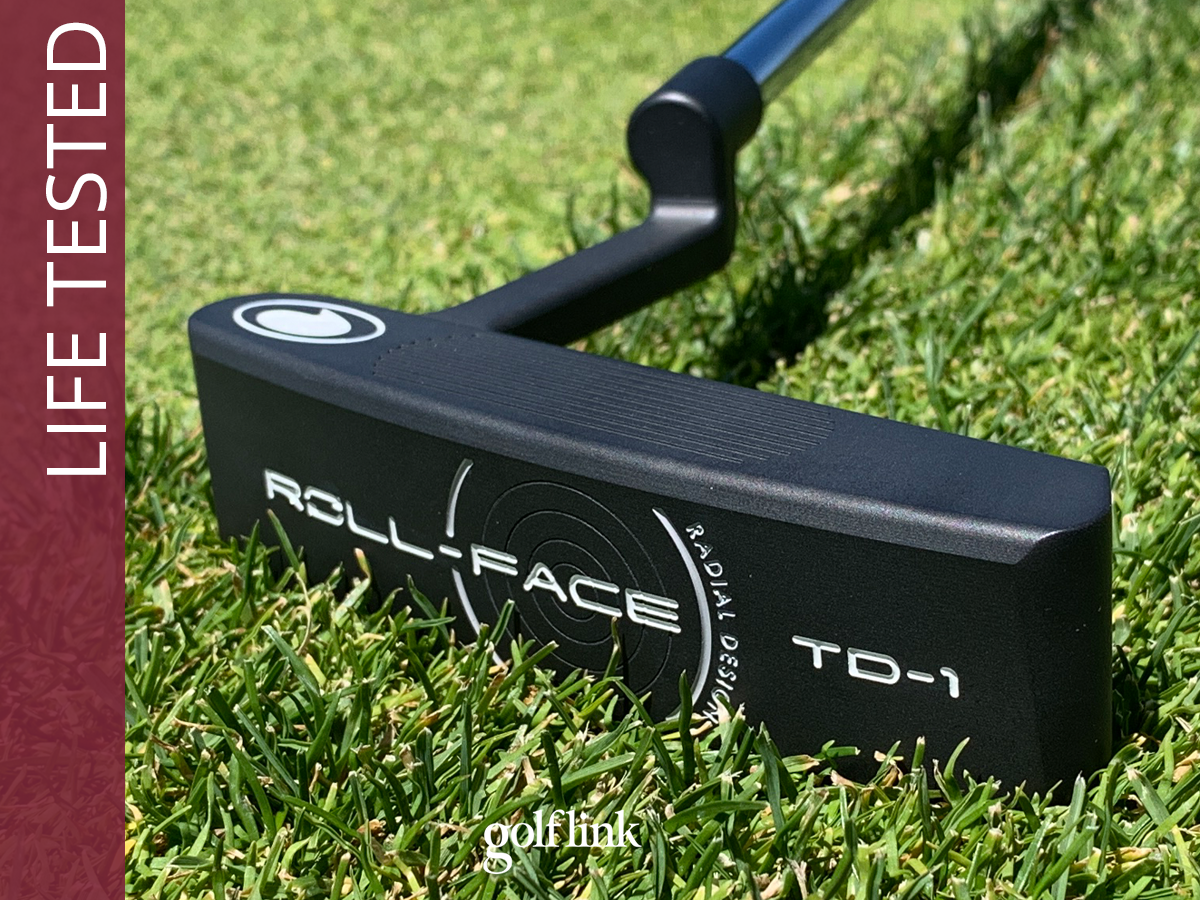TearDrop TD-1 Putter Life-Tested Review
TearDrop putters are back from the dead. Do they perform well enough to stick around this time?

Remember TearDrop Putters? They’re the ones from the 1990s with a unique rounded face that promised to produce a smoother roll, prevent skidding, and, of course, help you make more putts. But TearDrop hasn’t made noise in decades.
However, like so many other golf brands that had their heyday in the 1980s and 90s (see Zebra, Adams, Ram, MacGregor, Maxfli, Ben Hogan, and Tommy Armour), they’re back.
TearDrop dropped a brand new line of putters in the summer of 2024, the TD-1 (blade), TD-5 (rounded mallet), and TD-7 (mallet) models, which feature that signature Radial Face Design. Even though these new putters feature TearDrop’s classic face, they deliver modern-day looks and technology.
I put the new TearDrop TD-1 putter through a thorough six-week test to find out if there’s some new magic to this old brand.
How We Tested the TearDrop TD-1 Putter
I practiced and played exclusively with the TearDrop TD-1 putter for six weeks. I used The Stack Putting app to track performance in a practice environment, and Shot Scope to track on-course putting performance to find out in what areas, and by how much, the TearDrop putter could impact your game.
TearDrop TD-1 Putter Review

Shop TearDrop
Profile: Blade
Toe Hang: 25°
Offset: Full shaft
Price: $299
If you were expecting a budget-friendly price to accompany the latest reincarnation of a vintage golf brand, I certainly can’t blame you. To varying degrees, each of the aforementioned comebacks has been headlined by quality products from names you’ve heard of at a significant (often 25-50%) savings compared to the top brands in the game.
TearDrop, however, is different. There’s no doubt the new TearDrop putter is a premium product with high-end components, including a stepless shaft, choice of SuperStroke or TearDrop grip, and a quality, magnetic-close headcover.
That premium package comes with a $299 price tag, which makes it a competitor to putters like the Mizuno M. Craft, Odyssey Ai-One and TaylorMade Truss, and priced higher than some well-established putters from TaylorMade, Odyssey, and Cleveland.
Sure, there are more expensive putters out there, but budget shoppers have no problem finding suitable putters under $200, and folks with that filter won’t find this TearDrop.
60-Day Trial Period
One huge advantage TearDrop has, however, is its 60-day trial period (for users in the lower 48). You can actually try the putter for two months and – provided you don’t abuse it or modify it – return it for a refund if you decide it’s not for you.
This is the most generous trial and return policy I can remember seeing on any golf equipment, new or used. I consider a 30-day trial period with any equipment to be highly consumer-friendly, so I tip my cap to TearDrop for offering a two-month trial. That also demonstrates the confidence TearDrop has in its product.
Look & Feel

Visually the new TearDrop putters are excellent. The head boasts a matte black finish and the white alignment aids – a traditional single-line that runs perpendicular to a leading edge mark – stand out but are not distracting. There’s branding behind the face and on the sole, but at address, the putter presents a minimalist aesthetic.
The stepless shaft and grooved face return a solid feel at impact. I wouldn’t describe it as a soft-feeling putter, and TearDrop doesn’t, either.
TearDrop Putter Pros & Cons
If you have $300 to spend on a putter, you have some serious heavyweights to sift through. Here are the biggest pros and cons I think you should consider with the new line of TearDrop putters.
Pros:
- The Radial Face Design produces a smooth roll and adds forgiveness
- Premium product with high-end components
- Left and right-handed options with various head shapes and toe-hang options to suit just about every player
- 60-day risk-free trial period
- High-contrast alignment aids are all you see address
- Quality headcover with magnetic close
Cons:
- Stiff competition at the $299 price point

Why You Need a Putter Fitting and How to Do It Yourself
TearDrop TD Putter Performance
I tested the TearDrop TD-1 putter and tracked my performance on the course and the practice green, and by now I have a solid indication of how the putter performs. However, this was far short of a scientific experiment, so these results should be taken more as an illustration of how the putter performs, not as a guarantee you’ll get the same results.
That said, of the four putters I’ve tested using The Stack Putting System on the practice green this year, the TearDrop turned in the best overall Strokes Gained performance. During practice sessions, I performed best on medium to long putts of 7-30 feet. This is the same result I saw on the golf course as well.
According to on-course data I keep with Shot Scope, I increased my make-percentage from 6-18 feet with the TearDrop putter compared to any other putter I’ve used this year. While that make percentage only crept up a few percentage points from 6-9 feet, it nearly doubled from 9-12 and from 12-18 feet. On the other hand, I missed a few more from inside six feet, and therefore 3-putt more often with the TearDrop putter.
The bottom line is, from a performance standpoint, I felt confident over mid-range putts and rolled in more than I’m used to. I found it easy to start putts on line with the TearDrop putter and I plan on keeping it in the bag.
TearDrop’s Radial Face Design

I’m a huge fan of the Roll-Face technology that makes TearDrop putters unique. If you’re familiar with the Descending Loft Technology on Cobra and LA Golf putters, it’s a similar concept. That is, rather than a face with a single loft, the loft varies from the top to the bottom of the face. This ensures that whether you hit the putt high or low on the face, or in the exact center, you get a consistent and ideal roll.
The Radial Face Design differs from Descending Loft Technology (DLT) in that instead of four horizontal quadrants with 1, 2, 3, and 4 degrees of loft on the DLT face, the radial design is rounded. While I can’t tell there’s any curvature on the face by just looking at it (it’s quite subtle), I tested the performance and loved the results.
Hitting putts as high and as low as I possibly could on the putter face, I poured in 12-footers on the practice green at my home course one on top of another. I’m certain I couldn’t replicate that test, nor do I completely credit the Radial Face for all of that success, but I certainly saw enough to tell you with confidence that no matter where you hit putts vertically on the face, you can expect consistent and smooth roll with this putter.
I also tested the face of the TD-1, the least forgiving of the trio of new TearDrop putters, horizontally. Comparing about a dozen putts off the heel and toe of the TD-1 putter to a dozen off the center, the mis-hits lost about 5-10 percent of their distance but held pretty true to their line. The 12-footers I was hitting to the hole or a foot past off the center finished at the hole or a foot short when missed on the toe or heel.
Overall, the TD-1 putter fits my stroke and eye quite well, and I’m not surprised it produced solid results.
Who Should Consider a TearDrop Putter?
Should you go out and buy a new TearDrop putter? That’s the real question here.
Anybody who gets the feels from this putter certainly won’t be disappointed by its performance. I left my testing impressed with the putter overall. I believe in the Radial Face Design as a standout element that competitors don’t offer which can help with consistency and a pure roll, and if you want to put another TearDrop in the bag for old time’s sake, you won’t sacrifice any performance with the TD line. These putters are legit.
While I have no performance questions about this putter, my concern is that at the $299 price point, it won’t stand out. If that’s your budget for a putter, there are plenty of big-name options for you to choose from, and if you don’t know TearDrop from SeeMore, Evnroll, TaylorMade, Cleveland, or Odyssey, I’m not sure you’d pick this putter out of the bunch.
And if that hunch plays out, that’s too bad, because this back-from-the-dead brand is more than just an appeal to nostalgic players out there. There is legitimate performance in this premium package.